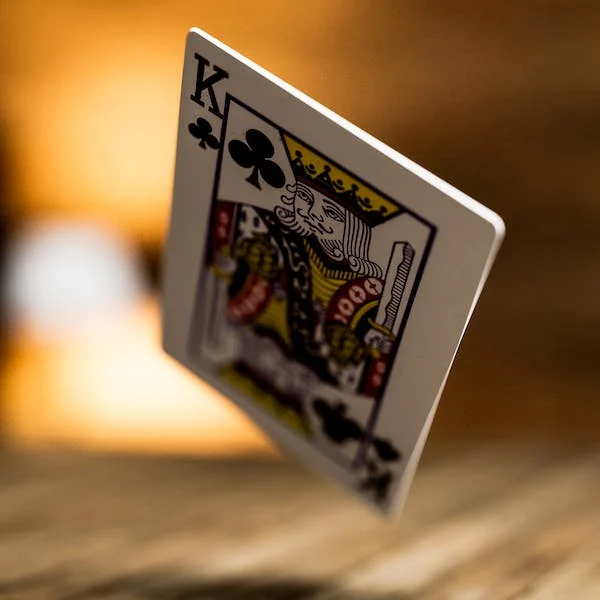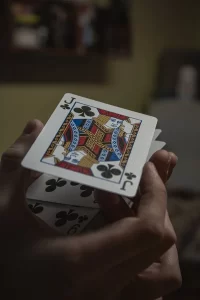Playing poker tournaments requires a combination of skill, strategy, and a deep understanding of the game. In this in-depth exploration, we will delve into the world of poker tournaments and uncover the winning strategies employed by professional players. From mastering the art of hand selection to understanding the importance of position, we will cover all aspects of tournament play. Whether you are a beginner looking to improve your game or an experienced player aiming to take your skills to the next level, this guide will provide you with the knowledge and insights needed to play poker tournaments like a pro.
Mastering the Art of Bluffing: Effective Techniques for Fooling Your Opponents
One of the most effective techniques for bluffing is known as the semi-bluff. This strategy involves betting or raising with a hand that has the potential to improve in later rounds. By doing so, you create the illusion of having a strong hand, forcing your opponents to fold or make mistakes. The key to a successful semi-bluff is choosing the right moment and reading your opponents’ reactions. If they seem hesitant or unsure, it may be a sign that they are not confident in their own hand, making it an ideal opportunity to execute a well-timed semi-bluff.
Another powerful bluffing technique is the continuation bet. This move involves betting on the flop, regardless of whether your hand has improved or not. The purpose of a continuation bet is to maintain control of the hand and put pressure on your opponents. By showing aggression early on, you force your opponents to second-guess their own hands and make difficult decisions. However, it is crucial to be selective with your continuation bets and consider the texture of the flop. If the community cards are favorable to your opponents’ likely range, it may be wiser to abandon the continuation bet and reassess your strategy.
A more advanced bluffing technique is the double-barrel bluff. This move involves making a continuation bet on the flop and following it up with another bet on the turn, even if your hand has not improved. The purpose of the double-barrel bluff is to maintain the illusion of strength and put maximum pressure on your opponents. However, this strategy requires a deep understanding of your opponents’ tendencies and the ability to accurately assess the strength of their hands. If your opponents are known to be cautious or tight players, the double-barrel bluff may be less effective, as they are more likely to fold when faced with aggression.
While bluffing can be a powerful tool, it is important to remember that it should not be overused. Bluffing too frequently can lead to predictability and make it easier for your opponents to exploit your strategy. It is crucial to mix up your play and balance your bluffs with strong hands. By doing so, you keep your opponents guessing and maintain an element of surprise.
In conclusion, mastering the art of bluffing is a crucial skill for any poker player looking to play tournaments like a pro. Effective bluffing techniques, such as the semi-bluff, continuation bet, and double-barrel bluff, can deceive your opponents and lead to significant gains. However, it is important to approach bluffing with caution and carefully assess the situation before executing a bluff. By combining strategic thinking, observation, and a deep understanding of the game, you can become a formidable opponent at the poker table.
Reading Your Opponents: Analyzing Body Language and Tells to Gain an Edge
In the high-stakes world of poker tournaments, the ability to read your opponents can be the difference between victory and defeat. While mastering the rules and understanding the odds are essential, being able to decipher the subtle cues and signals that your opponents give off can give you a significant advantage. In this article, we will delve into the art of reading body language and tells, providing you with valuable insights on how to gain an edge at the poker table.
One of the most crucial aspects of reading your opponents is observing their body language. A player’s physical movements, facial expressions, and even their breathing patterns can reveal a wealth of information about the strength of their hand or their level of confidence. For example, a player who is leaning back in their chair, relaxed and seemingly disinterested, may be trying to project a sense of calmness and control. This could indicate that they have a strong hand and are confident in their ability to win the pot.
Conversely, a player who is leaning forward, fidgeting, or displaying signs of nervousness may be signaling weakness. They could be bluffing or unsure of their hand’s strength, making them more susceptible to being pushed out of the pot. By paying close attention to these physical cues, you can adjust your strategy accordingly, either by aggressively betting to exploit their weakness or by exercising caution when they display strength.
Another valuable source of information lies in the verbal and non-verbal cues that players give off during the course of a hand. These “tells” can be subtle, but with careful observation, they can provide valuable insights into your opponents’ thought processes. For instance, a player who suddenly becomes talkative or starts engaging in small talk may be trying to distract you from their true intentions. This could be a sign that they are bluffing or trying to conceal the strength of their hand.
On the other hand, a player who becomes unusually quiet or avoids eye contact may be signaling that they have a strong hand. They may be trying to appear disinterested or uninvolved in the hand to lure you into a false sense of security. By being attuned to these verbal and non-verbal cues, you can make more informed decisions and avoid falling into your opponents’ traps.
It is important to note that reading your opponents’ body language and tells is not an exact science. People have different personalities and may exhibit different behaviors under pressure. Therefore, it is crucial to establish a baseline for each player by observing their behavior throughout the tournament. By doing so, you can identify patterns and deviations from their normal behavior, allowing you to make more accurate assessments of their hand strength.
In conclusion, reading your opponents’ body language and tells is a vital skill for any serious poker player. By paying close attention to their physical movements, facial expressions, and verbal cues, you can gain valuable insights into their hand strength and intentions. However, it is important to remember that these cues are not foolproof and should be used in conjunction with other strategies and information. With practice and experience, you can become adept at reading your opponents, giving you a significant edge at the poker table.
Bankroll Management: How to Optimize Your Finances for Long-Term Success
It is important to understand what bankroll management entails. Simply put, it is the practice of allocating and managing your poker funds in a way that minimizes risk and maximizes potential returns. Without proper bankroll management, even the most skilled players can find themselves in dire financial situations, unable to continue playing the game they love.
To begin, it is crucial to establish a dedicated poker bankroll separate from your personal finances. This ensures that your poker funds are not mixed with money intended for other purposes, such as bills or daily expenses. By keeping your poker bankroll separate, you can better track your wins and losses, making informed decisions about your gameplay and financial commitments.
Once you have established a dedicated poker bankroll, the next step is determining the appropriate size for your buy-ins. As a general rule of thumb, it is recommended to have at least 20 to 30 buy-ins for the stakes you are playing. This provides a buffer against variance, the natural fluctuations in poker results, and reduces the risk of going broke during a downswing.
Furthermore, it is essential to be realistic about your skill level and the stakes you can comfortably afford. While it may be tempting to jump into high-stakes tournaments with dreams of instant riches, it is crucial to start at a level that matches your bankroll. Gradually moving up in stakes as your skills and bankroll grow is a more sustainable approach that minimizes the risk of significant financial losses.
In addition to determining the appropriate buy-in size, it is equally important to set loss limits. This means establishing a maximum amount you are willing to lose in a single session or tournament. By setting loss limits, you protect yourself from chasing losses and making impulsive decisions that can lead to further financial setbacks. It is crucial to stick to these limits, even in the face of adversity, as discipline is a key component of successful bankroll management.
Another crucial aspect of bankroll management is regularly reviewing and adjusting your strategy based on your results. This involves analyzing your wins and losses, identifying patterns, and making necessary adjustments to your gameplay and financial commitments. By constantly evaluating your performance, you can adapt to changing circumstances and make informed decisions that optimize your long-term success.
Lastly, it is important to remember that bankroll management is not a one-time task but an ongoing process. As your poker skills improve and your bankroll grows, it is essential to reassess your financial goals and adjust your strategy accordingly. By regularly monitoring and adjusting your bankroll management practices, you can ensure that your finances are optimized for long-term success in poker tournaments.
In conclusion, effective bankroll management is a fundamental aspect of playing poker tournaments like a pro. By establishing a dedicated poker bankroll, determining appropriate buy-in sizes, setting loss limits, regularly reviewing and adjusting your strategy, and reassessing your financial goals, you can optimize your finances for sustained success. Remember, poker is not just a game of skill but also a game of managing your resources wisely.
Tournament Selection: Choosing the Right Events to Maximize Your Chances of Winning
First and foremost, it is essential to understand that not all poker tournaments are created equal. Each event has its own unique characteristics, such as buy-in amount, field size, structure, and level of competition. To increase your chances of winning, you must carefully evaluate these factors and select tournaments that align with your skill level and bankroll.
One key consideration when choosing a tournament is the buy-in amount. It is crucial to find a balance between affordability and potential payout. While high buy-in events offer larger prize pools, they also attract more experienced and skilled players. As a beginner or intermediate player, it may be wiser to start with lower buy-in tournaments, where the competition is less fierce, allowing you to gain valuable experience and build your bankroll.
Another factor to consider is the field size. Smaller tournaments with fewer participants generally offer a higher chance of reaching the final table and securing a cash prize. However, the prize pool in these events may be relatively modest. On the other hand, larger tournaments with a massive field size offer the allure of life-changing payouts but come with a higher level of competition. It is crucial to assess your skill level and risk tolerance when deciding between smaller, more manageable events or larger, more challenging ones.
The structure of a tournament is another critical aspect to evaluate. The structure refers to the length of the levels, the starting chip stack, and the blind structure. Tournaments with longer levels and deeper starting stacks allow for more skillful play and strategic decision-making. These events favor players with a solid understanding of the game and provide ample opportunities to outplay opponents. Conversely, tournaments with shorter levels and smaller starting stacks tend to be more luck-dependent, as players are forced to make quick decisions with limited resources. It is advisable to choose events with a structure that suits your playing style and skill set.
Lastly, it is essential to consider the level of competition in a tournament. Some events attract a higher caliber of players, including professionals and seasoned veterans. While competing against top-notch opponents can be a valuable learning experience, it also increases the difficulty of securing a victory. As a beginner or intermediate player, it may be more advantageous to participate in tournaments with a softer field, where the competition is less fierce. This will allow you to gain confidence, refine your skills, and gradually progress to more challenging events.
In conclusion, tournament selection is a crucial aspect of playing poker tournaments like a pro. By carefully evaluating factors such as buy-in amount, field size, structure, and level of competition, you can make informed decisions that maximize your chances of winning. Remember to find a balance between affordability and potential payout, assess your skill level and risk tolerance, and choose events with a structure that suits your playing style. With these strategies in mind, you will be well on your way to becoming a formidable poker tournament player.
Mental Toughness: Developing the Mindset of a Poker Pro to Stay Focused and Confident
When it comes to playing poker tournaments, having a strong mental game is just as important as understanding the rules and strategies of the game. In fact, many professional poker players attribute their success to their ability to stay focused and confident in high-pressure situations. In this section, we will delve into the world of mental toughness and explore the mindset of a poker pro.
One of the key aspects of mental toughness in poker is the ability to stay focused. In a tournament setting, distractions are abundant, from the noise of the crowd to the pressure of the competition. A poker pro knows how to block out these distractions and maintain a laser-like focus on the game at hand. This requires a great deal of mental discipline and concentration.
To develop this level of focus, many poker pros employ various techniques. Some use meditation or deep breathing exercises to calm their minds and clear away any distractions. Others rely on visualization techniques, mentally rehearsing their moves and strategies before the tournament begins. By practicing these techniques regularly, players can train their minds to stay focused even in the most chaotic of environments.
Confidence is another crucial element of the poker pro mindset. In a game where decisions must be made quickly and under pressure, self-doubt can be a player’s worst enemy. A poker pro understands the importance of believing in their abilities and trusting their instincts. This confidence allows them to make bold moves and take calculated risks, even when the odds may seem stacked against them.
Building confidence in poker requires a combination of experience and self-belief. The more a player practices and hones their skills, the more confident they become in their abilities. Additionally, surrounding oneself with a supportive network of fellow players can also boost confidence. By sharing experiences and learning from others, players can gain valuable insights and reinforce their belief in their own abilities.
However, it’s important to note that mental toughness in poker is not just about staying focused and confident during the game. It also involves the ability to handle losses and setbacks with grace and resilience. In a tournament setting, it’s inevitable that players will experience both highs and lows. How they respond to these ups and downs can greatly impact their overall performance.
A poker pro understands that losses are a part of the game and does not let them affect their mindset. Instead of dwelling on past mistakes or bad beats, they focus on the present moment and the decisions they need to make. They learn from their losses and use them as opportunities for growth and improvement. This resilience allows them to bounce back quickly and stay in the game, even when things don’t go their way.
In conclusion, mental toughness is a crucial aspect of playing poker tournaments like a pro. Developing the mindset of a poker pro involves cultivating focus, confidence, and resilience. By employing techniques such as meditation, visualization, and self-belief, players can train their minds to stay focused and make confident decisions under pressure. Additionally, learning from losses and setbacks is essential for maintaining a strong mental game. With a solid mental foundation, players can navigate the complexities of poker tournaments with ease and increase their chances of success. Playing poker tournaments like a pro requires a deep understanding of winning strategies. This involves mastering various aspects such as hand selection, position play, reading opponents, and managing bankroll effectively. By implementing these strategies, players can increase their chances of success and consistently perform at a high level in poker tournaments.




